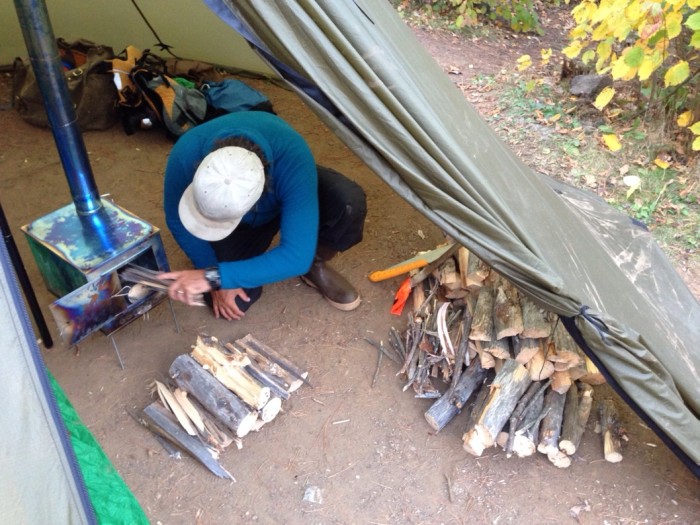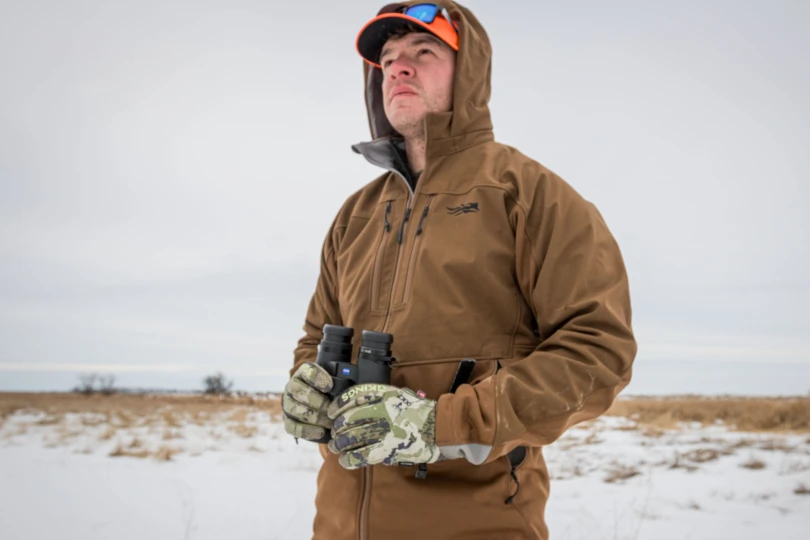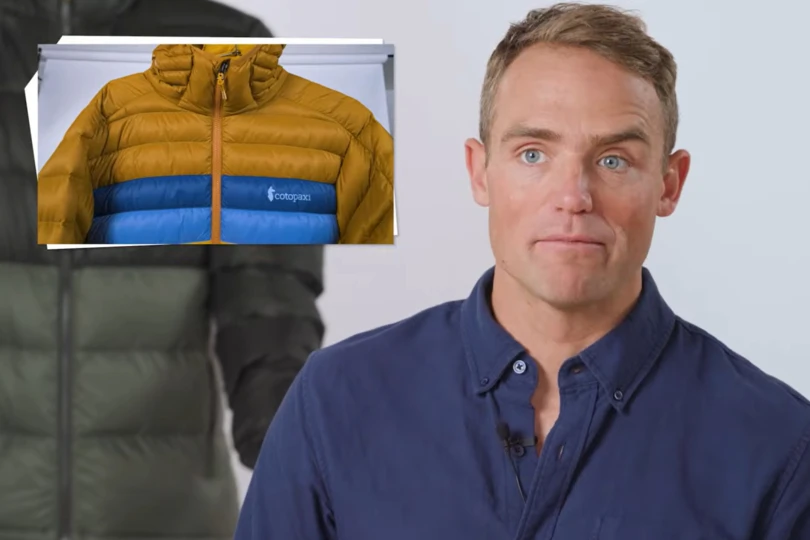[leadin]Adventurers Dave and Amy Freeman are spending a full year in the Boundary Waters of northern Minnesota, living in the wilderness and testing gear as a part of their daily existence. In this review, Dave looks at the much-lauded Patagonia Merino Air base layer.[/leadin]

After 80 days in the wilderness, it’s interesting to think back about the clothing and equipment that we have used, the old standbys, and the new gear we figured we would try.
Patagonia’s Merino Air top and bottoms are among the new pieces of clothing that I have really grown to appreciate. It’s garnered great attention at GearJunkie, which honored the “stretchy, seamless, highly-breathable” top as one of its Gear Of The Year pieces in 2015.
Here’s part of that article, which summarizes why the design is special: This wool-polyester base layer is a new take in a category that doesn’t often see innovation. During manufacturing, the fibers are exposed to a high-pressure air gun, and the resulting “exploded” yarn is higher-loft than any base layer we’ve seen of its weight — you can both feel and see the breathability of this top.
Patagonia Merino Air Review, Available Now ($149)
I have two sets of long underwear and have probably worn my Merino Air top and bottom for 60 out of the last 80 days.
Weeks have gone by where I haven’t taken them off. Amy, my wife, has said they make me look like a Tele-Tubby when the hood is pulled up, but other than that, I see no reason to take them off except to wash them on occasion.

I switched from synthetic to wool base layers about 5 years ago because I like the feel of wool better, and wool doesn’t trap odor as much as synthetics. The Merino Air base layers are 51% merino wool and 49% polyester.
I was a little unsure how I would like the blend and I was concerned about odor over the long haul. I was also a little skeptical about the long term durability because the weave of the fabric is very light.

The fabric has held up well. It is hard to know what they will look like at the end of our year in the Wilderness because I plan to keep wearing them almost every day. But so far there are very few signs of pilling or wear, and I expect they will still be going strong after a couple hundred days of use and abuse.
Also, I don’t think they trap any more odor than 100% merino wool, but they seem to dry a little faster. They probably do not dry quite as fast as a 100% synthetic lightweight base layer, but the fabric is very breathable, provides excellent wicking, and the seamless design makes them so comfortable I forget that I am wearing them.

This is the first set of long underwear that I have had that has a hood and I am sold. I almost always sleep with the hood on, and as it gets colder I appreciate being able to cover my head and neck easily. If I get hot I just slip the hood off. If I get cold, the hood goes on. There is no pulling hats out of pockets or packs.
The Merino Air shines during high-output activities in cold weather. Skiing, climbing, or running when the temperature drops are all perfect times to slip on your Merino Air.
However, Merino Air base layers are very lightweight and can be helpful for any climate. I would wear them as a base layer in the Arctic winter, but I would also have them in my pack in the summer to sleep in on a cool night. If your office is cold wear it to work, but maybe skip the hoody for fear of weird looks.

Who It’s For: I think everyone should have a quality set of long underwear. If you are watching a hockey game or heading out on a wilderness trek, or out walking the dog on a cold day, a Merino Air base layer can help you stay warm and comfortable.
Merino Air Construction
The Merino Air base layers are made of merino wool from the grasslands of the Patagonia region. They are spun using a proprietary process that increases the yarn’s heat-trapping ability without increasing its weight. It’s then blended with recycled Capilene polyester using “whole-garment seamless knitting” that creates a lightweight, super breathable, performance-fit base layer.

Flaw: $149 is a lot for a base layer top. But the 100% recycled Capilene, responsibly sourced wool, and Patagonia’s commitment to making high-quality products in a responsible manner comes at a price. This long underwear is not cheap, but this is a great piece of gear and I think you get what you pay for.
Another slight flaw, I have found that the unique weave traps more hair and dirt than a tighter weave base layer. However, taking them off and shaking them every few days seems to fix this. If you aren’t planning to wear them for a week at a time you probably won’t notice the effect.

Final Thoughts: This is a great base layer, which is very versatile, breathable, and comfortable. It really shines during high output activities like skiing and running in cool and cold weather, but because it is so lightweight works well in warmer temps when you are not as active and just need a little bit of breathable insulation.
–Dave Freeman and his wife Amy are spending a year in the Boundary Waters Canoe Area Wilderness in an effort to protect the Boundary Waters from a series of sulfide-ore copper mines that are proposed along the edge of our nation’s most popular Wilderness. Throughout their “Year in the Wilderness” they are sharing regular reviews on GearJunkie.com. Dave and Amy were named National Geographic Adventurers of the Year in 2014.





